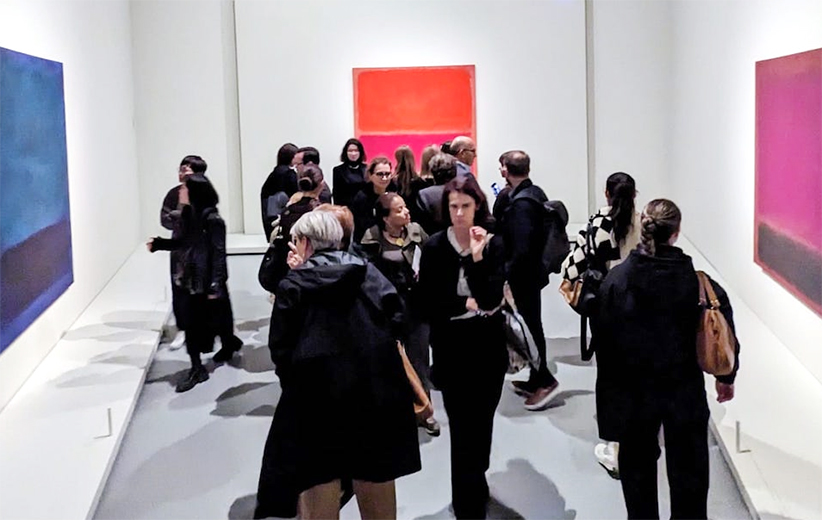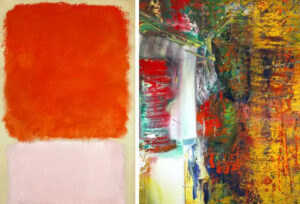
Mark Rothko, an artist whose name has become synonymous with the evolution of abstract art, left an indelible mark on the artistic landscape. His inciteful paintings, crafted with the sole intention of providing enjoyment to others, have not only stood the test of time but have also become iconic representations of the power of color and form in the world of art. This article delves deeper into Rothko’s contributions, exploring the evolution of his style, the emotional resonance of his color palette, the accessibility of his work, and his architectural venture, the Rothko Chapel.

The Evolution of Rothko’s Artistic Expression:
Rothko’s early artistic explorations were characterized by diversity in styles and subjects, demonstrating his willingness to experiment and push the boundaries of traditional art. Portraiture, in particular, held a special fascination for Rothko during this phase. However, it took time for him to discover and refine his preferred abstract approach, the very style that would come to define his artistic legacy.
The emergence of Rothko’s distinctive abstract style was marked by the convergence of bold colors, notably oranges and yellows, as seen in some of his more popular works. Blues, greys, and reds became recurring choices, while the strategic use of white offered a dynamic contrast that heightened the emotional impact of his paintings. One notable example of this contrast is evident in the emotive “Red on White,” a piece that exemplifies Rothko’s ability to communicate profound sentiments through the interaction of colors.
A Journey through Rothko’s Emotional Palette:
Rothko’s use of color was not merely a visual spectacle; it was a language through which he communicated emotion. The warmth of oranges and yellows exuded vibrancy and positivity, while the coolness of blues and greys created a sense of calm and contemplation. The judicious application of reds added intensity and passion to his compositions, and the strategic use of white served as a powerful tool to amplify the emotional resonance within his abstract spell.
Public and Private Appreciation:
Rothko’s legacy is not confined to the private realm of collectors; it extends to the public domain through national galleries in major cultural hubs such as London, New York, and Washington. The privilege of witnessing Rothko’s original works in these galleries provides a unique opportunity for art enthusiasts to experience the scale, texture, and nuances of his creations firsthand.
Rothko’s commitment to accessibility is evident in his generous donation of several pieces to national galleries. His motivation was driven by a desire to ensure that his work remained accessible to all, with financial gain playing a secondary role. This altruistic approach has contributed to the democratization of art appreciation, allowing diverse audiences to engage with Rothko’s masterpieces.
The Universal Appeal of Rothko’s Prints:
While original Rothko paintings reside in prestigious galleries, the artist’s international fanbase has embraced the accessibility of print reproductions. Popular choices include prints like “Magenta,” “Black, Green on Orange,” and “No. 61 (Rust and Blue).” Rothko’s consistent abstract approach enables admirers to choose pieces that align with their preferred color schemes, turning his art into a personalized and stylish choice for home decor.
Simplicity in Naming and the 20th-Century Trend:
A distinctive aspect of Rothko’s approach to titling his works is its simplicity. Following a trend common among 20th-century artists, Rothko’s paintings are often named with a straightforwardness that reflects the essence of the artwork. Titles frequently include the colors used or the sequence number, allowing viewers to focus on the emotional impact of the work rather than deciphering elaborate titles.
Beyond the Canvas: The Rothko Chapel:
Mark Rothko’s artistic exploration extended beyond the confines of canvas to architectural design. The Rothko Chapel, a testament to his vision, stands as a place where art and spirituality converge. Visitors to this serene space are surrounded by Rothko’s paintings, providing a unique opportunity for contemplation amidst sculptures by other artists. The Rothko Chapel is more than a physical structure; it is a sanctuary where individuals can immerse themselves in 20th-century art while finding moments of peace and reflection.
Mark Rothko’s enduring legacy lies not only in his vibrant and emotive paintings but also in his commitment to making art accessible to all. His contributions to abstract expressionism continue to resonate globally, with his color palette and abstract approach transcending time and inspiring a diverse audience. Whether experienced in a prestigious gallery or through a carefully chosen print in a private home, Rothko’s art invites viewers into a world of emotion and contemplation, leaving an indelible imprint on the art world.
